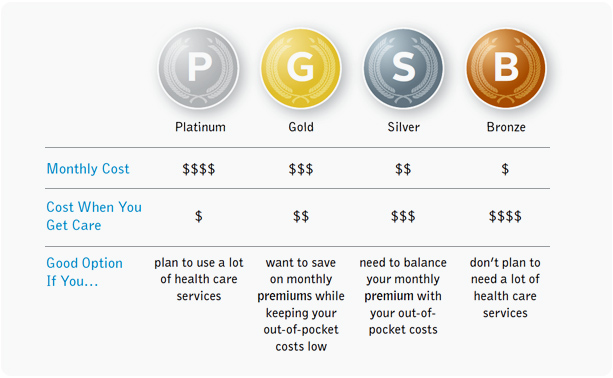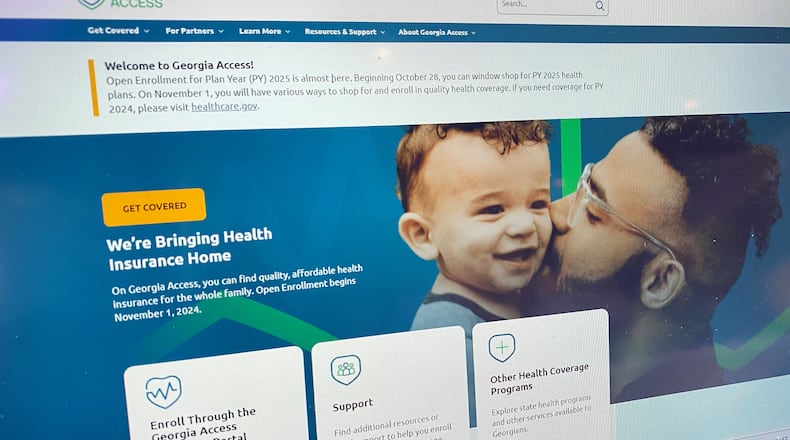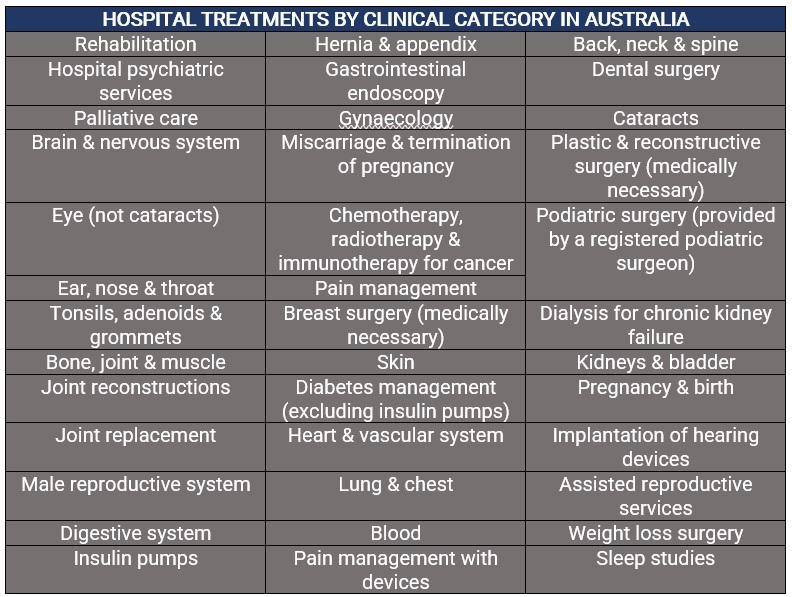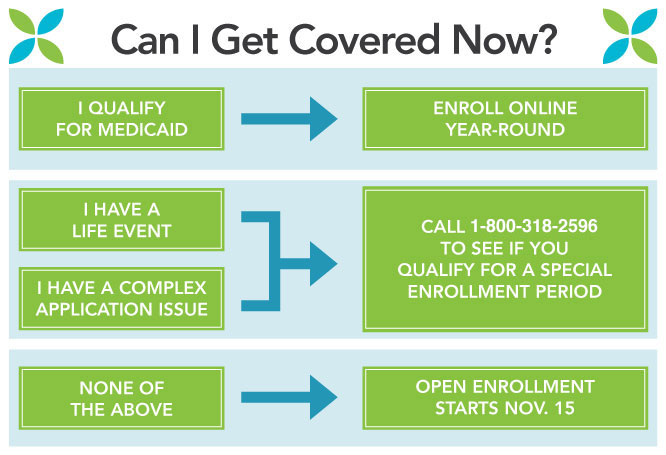Introduction to Health Insurance Plans
As 2025 approaches, understanding health insurance plans becomes increasingly vital for individuals and families seeking affordable healthcare coverage. Navigating the complex landscape of health insurance can feel like a strategic game, where every choice impacts health and finances. With HealthCare.gov, consumers gain access to a platform that simplifies this process, yet it remains essential to grasp the nuances of various health insurance options available.

Image source: Source
Health insurance plans can be categorized into several tiers, each designed to meet different healthcare needs and financial capacities. The diversity of these plans reflects the importance of tailoring coverage to individual circumstances, considering factors such as age, health status, and income. Recent policy changes continue to shape the offerings on HealthCare.gov, particularly in mental health services. For example, new cost-sharing measures for mental health outpatient visits underscore a growing awareness of mental health’s significance in overall healthcare.

Image source: Source
Moreover, understanding the pricing mechanisms behind these plans is crucial. Various elements, such as premiums, deductibles, and out-of-pocket costs, play a critical role in determining the affordability of health insurance. Recent enhancements in financial assistance, driven by legislation like the American Rescue Plan and the Inflation Reduction Act, aim to alleviate the burden of healthcare costs for many Americans. These measures not only improve access to necessary services but also foster a more equitable healthcare system.
As individuals prepare to engage with HealthCare.gov for 2025, they must approach health insurance plans with a strategic mindset. By understanding the available options and their associated costs, consumers can make informed decisions that align with their healthcare needs and financial situations. What steps will you take to ensure you select the right health insurance plan for your needs?
The Importance of HealthCare.gov
HealthCare.gov is a cornerstone of the American health insurance landscape, significantly shaping how individuals access and understand their insurance options. Since its inception under the Affordable Care Act (ACA), the platform has emphasized transparency and consumer protection, providing users with critical information to make informed decisions about their health coverage.
Recent developments on HealthCare.gov highlight an increased focus on mental health services, addressing a growing need within the healthcare system. The introduction of cost-sharing for urgent care and outpatient mental health visits underscores the importance of mental health in overall well-being, reflecting a broader acknowledgment of healthcare needs beyond physical ailments. This shift toward prioritizing mental health services expands the options available to consumers, ensuring that they can find plans that cater to these essential health needs.

Image source: Source
The platform’s role in facilitating access to these options cannot be overstated. It serves as a comprehensive resource for comparing plans, estimating costs, and understanding the nuances of health insurance. With the Open Enrollment Period underway, HealthCare.gov becomes an indispensable tool for consumers navigating the complexities of health insurance in an ever-evolving landscape.
In this context, the importance of HealthCare.gov extends beyond mere accessibility; it embodies a commitment to empowering consumers with the knowledge and resources necessary to make choices that align with their healthcare needs. As we anticipate further enhancements and changes in health insurance offerings, HealthCare.gov will remain a vital navigational aid for millions across the nation.
For more details on the various health insurance plans and prices available, visit the HealthCare.gov website.
Accessing Health Insurance Plans on HealthCare.gov
Accessing health insurance plans through HealthCare.gov is a streamlined process that allows users to find coverage tailored to their individual needs. The journey begins with entering a ZIP code, a critical action that personalizes the experience. By inputting their ZIP code, consumers gain access to plans available in their locality, which can vary significantly based on state regulations and local providers.

Image source: Source
HealthCare.gov also provides users with the ability to preview estimated prices, enabling individuals to assess potential costs without needing to create an account or log in. Understanding the price range of available plans helps consumers make informed decisions about which options fit within their budget, enhancing their overall experience with the health insurance marketplace.
This approach not only aids in financial planning but also sets the stage for a deeper exploration of the plans themselves. Once users have an idea of the estimated costs, they can compare various plans in terms of coverage options, deductibles, and out-of-pocket expenses. This comparative analysis empowers consumers to weigh the benefits of different plans and identify the one that best meets their health care needs.
The accessibility of these personalized tools reflects a broader commitment to consumer empowerment. As potential policyholders navigate their options, they are equipped with the necessary information to make choices that align with their health priorities and financial capabilities. HealthCare.gov serves not only as a portal for purchasing insurance but also as a valuable resource for understanding the nuances of health coverage in today’s ever-evolving landscape.
For more information on accessing health insurance plans and previewing prices, visit HealthCare.gov.
Understanding Health Insurance Categories and Pricing
Health insurance plans are categorized into four primary tiers: Bronze, Silver, Gold, and Platinum. Each tier reflects a balance of premiums, cost-sharing, and coverage levels, allowing consumers to make informed choices based on their healthcare needs and financial situations. The Bronze tier, typically featuring the lowest premiums, covers about 60% of the average member’s healthcare costs, leaving 40% for the insured to pay through deductibles and co-payments. Silver plans cover 70% of costs, making them appealing for those who qualify for cost-sharing reductions. Gold plans provide a higher level of coverage at 80%, while Platinum plans cover about 90% of costs, but come with correspondingly higher premiums.

Image source: Source
These distinctions are crucial as individuals weigh their healthcare needs against financial considerations. For instance, a healthy individual may opt for a Bronze plan to keep monthly costs low, while someone with ongoing medical expenses might prioritize a Gold or Platinum plan for better coverage. The implications of these choices extend beyond mere costs, impacting access to necessary services and overall healthcare quality.
In addition to these categories, Catastrophic plans serve as a safety net for young adults and others who qualify based on specific criteria, such as being exempt from other coverage options. These plans typically feature lower premiums but higher deductibles, covering essential health benefits after the deductible is met. They are designed for those who want to protect themselves against high costs in unforeseen medical emergencies.
Understanding these health insurance categories and pricing structures is essential for consumers navigating the complexities of the healthcare marketplace. With recent enhancements to financial assistance programs, including premium tax credits and cost-sharing reductions, individuals can better align their insurance choices with both their healthcare needs and financial capabilities. As the landscape of health insurance continues to evolve, informed decision-making becomes increasingly critical.
As you assess your health insurance options, consider how each tier aligns with your long-term health goals. For further details on health plan categories and pricing, resources are available through HealthCare.gov.
Financial Assistance and Subsidies
HealthCare.gov offers a range of financial assistance options designed to make health insurance more affordable for individuals and families. Two primary types of assistance are premium tax credits and cost-sharing reductions, both of which can significantly alleviate the financial burden of healthcare costs.

Image source: Source
Premium tax credits are available to eligible consumers based on their household income and the cost of coverage in their area. These credits can substantially lower monthly premiums, making insurance plans accessible for those who might otherwise struggle to afford them. Individuals with incomes between 100% and 400% of the federal poverty level may qualify for these credits, which adjust according to the marketplace’s pricing dynamics. This adjustment ensures continued support for those in need as premiums change.
Cost-sharing reductions (CSRs) further enhance affordability by lowering out-of-pocket expenses associated with deductibles, copayments, and coinsurance. Available for those who select Silver level plans and have incomes between 100% and 250% of the federal poverty level, CSRs make it easier for consumers to access necessary medical services without facing exorbitant expenses at the point of care.
Additionally, Medicaid and the Children’s Health Insurance Program (CHIP) provide crucial support for low-income families, offering comprehensive coverage at little to no cost and removing significant barriers to accessing healthcare.
Understanding these financial assistance options is vital, as they can dramatically shape an individual’s or family’s healthcare experience. As you consider your health coverage options, how might financial assistance impact your decision-making process? The ongoing evolution of these subsidies suggests a continued commitment to making health insurance more attainable for all Americans, particularly as the healthcare landscape evolves to meet diverse needs.
For more information on the specifics of premium tax credits and cost-sharing reductions, consumers can visit the official HealthCare.gov site at Lower Cost Marketplace Health Care.
Navigating the Open Enrollment Period
The Open Enrollment Period (OEP) is a critical timeframe for individuals seeking health insurance coverage through HealthCare.gov. For the 2025 coverage year, this period extends from November 1 to January 15, 2025, with a pivotal deadline on December 15 for those wanting their coverage to begin on January 1. Missing this deadline may lead to a gap in coverage, underscoring the importance of timely enrollment.

Image source: Source
During the OEP, consumers have the opportunity to enroll in new health plans, switch existing plans, and make necessary updates to their coverage. This flexibility allows individuals and families to adjust their health insurance based on changing needs, such as shifts in income, household size, or health status. Effectively navigating this period can significantly impact both the affordability and adequacy of coverage.
It is essential for consumers to understand the renewal process, as many individuals may automatically renew their current plans unless they take action to change or update their selections. While automatic renewal can be beneficial, it may not always align with an individual’s current health needs or financial situation. Thus, utilizing available tools and resources on HealthCare.gov to review and compare plans is crucial.
As we approach the OEP, consumers should also consider potential changes in financial assistance and subsidies that may affect their overall premiums and out-of-pocket expenses. Staying informed about personal circumstances and broader market trends is vital for making informed decisions.
Ultimately, understanding the nuances of the Open Enrollment Period empowers individuals to make choices that best suit their health care needs and financial situations, ensuring they are adequately prepared for the upcoming year. To learn more about the OEP, including specific dates and requirements, visit the Marketplace Plan Year 2025 Open Enrollment Fact Sheet.
Comparing Health Insurance Plans
When navigating the complex landscape of health insurance, comparing plans on HealthCare.gov is essential for making informed choices. Utilizing the platform’s comparison tools allows consumers to evaluate various health insurance options effectively. Key factors to consider include deductibles, out-of-pocket costs, and overall yearly expenses, all of which significantly influence the affordability and value of a plan.
Deductibles are crucial to assess; they represent the amount a policyholder must pay for covered healthcare services before the insurance plan begins to pay. A lower deductible may result in higher monthly premiums, while a higher deductible could lower monthly costs but increase out-of-pocket spending when medical care is needed. Understanding these trade-offs is vital for aligning plans with individual healthcare needs and financial situations.
Out-of-pocket costs encompass expenses such as copayments and coinsurance, which require careful scrutiny. These costs can accumulate quickly, especially for individuals with chronic health conditions or those requiring frequent medical attention. Plans with lower out-of-pocket maximums can provide more financial protection in the long run, making them a viable option for those who expect high medical expenses.
Overall yearly expenses include not just the premiums and deductibles but also the estimated costs of routine care and any anticipated medical treatments. By calculating the total potential yearly expenditure, consumers can gain a clearer picture of which plan offers the best value based on their healthcare utilization patterns.
Moreover, the user-friendly interface on HealthCare.gov enables side-by-side comparisons of these critical factors, allowing consumers to make well-informed decisions. The platform’s emphasis on transparency and detailed plan summaries ensures individuals can navigate the complexities of health insurance with greater ease. As you prepare to compare plans, take a moment to explore the interactive tools available on HealthCare.gov that can simplify your decision-making process.
Consumer Resources for Understanding Costs
HealthCare.gov offers a variety of consumer resources to help individuals and families navigate the complexities of health insurance costs. One of the primary tools available is the consumer’s guide, which outlines essential information about health care insurance coverage and options. This guide serves as a vital starting point for understanding the intricacies of various health plans, including details about premiums, deductibles, and out-of-pocket maximums.
In addition to online resources, HealthCare.gov provides in-person assistance through trained navigators. These professionals help consumers interpret their options, fill out applications, and make informed choices tailored to their specific circumstances. This personalized support can be especially valuable for those unfamiliar with health insurance terminology or the application process.
Understanding the types of insurance plans available—such as HMO, PPO, EPO, and POS—is crucial for making informed decisions regarding out-of-pocket expenses. Each plan type has its own network of providers and coverage rules, which can significantly influence overall costs. For instance, while an HMO plan may offer lower premiums, it typically requires members to select a primary care physician and obtain referrals for specialists, potentially limiting flexibility.
Consumers are encouraged to utilize the comparison tools on HealthCare.gov, allowing them to evaluate different health plans side by side. This feature helps users consider various factors, including coverage specifics and associated costs, ensuring a more comprehensive understanding of what each plan offers.
By leveraging these resources, individuals can better navigate the complex landscape of health insurance, making informed choices that align with their healthcare needs and financial situations. For further insights, the Consumer’s Guide to Health Care Insurance and In-Person Assistance in the Health Insurance Marketplaces provide valuable assistance in understanding health insurance options.
Recent Legislation Impacting Pricing
Recent legislative measures, notably the American Rescue Plan Act and the Inflation Reduction Act, have significantly reshaped the landscape of health insurance pricing on HealthCare.gov. These laws have been pivotal in enhancing affordability for consumers, a critical objective as healthcare costs continue to rise.

Image source: Source
The American Rescue Plan, enacted in March 2021, expanded financial assistance for health insurance premiums, allowing more individuals and families to qualify for subsidies. This expansion included increasing premium tax credits and eliminating the income cap for subsidy eligibility, which previously limited assistance to those earning up to 400% of the federal poverty level. As a result, many enrollees have experienced substantial reductions in their monthly premiums, making coverage more attainable.
Building on this foundation, the Inflation Reduction Act, signed into law in August 2022, further solidified these advancements by extending enhanced premium assistance through the end of 2025. This legislation not only maintains the expanded subsidies established under the American Rescue Plan but also aims to reduce out-of-pocket costs for consumers. The act emphasizes lowering prescription drug prices and capping insulin costs, significantly impacting overall healthcare expenses for individuals with chronic conditions.
These legislative changes have led to a notable increase in enrollment on HealthCare.gov, as more people recognize the financial viability of obtaining health insurance. According to the Centers for Medicare & Medicaid Services, millions of Americans have benefited from these extended subsidies, highlighting an important shift toward greater accessibility in healthcare coverage.
As we look toward the future, the implications of these legislative changes could be profound. If trends continue, we may witness a sustained increase in the number of insured individuals, ultimately contributing to better health outcomes and financial security for families across the nation. What might the landscape of health insurance look like if these trends continue?
For more detailed information on how to take advantage of these changes, visit the official resources available at HealthCare.gov.
Conclusion: Empowering Informed Decisions
In a landscape where health insurance choices can significantly impact both financial stability and access to care, it is vital for consumers to utilize the resources available on HealthCare.gov. Understanding key factors such as provider network flexibility and overall costs is essential for navigating health insurance options. By actively engaging with the tools and information provided, individuals can select plans that align with their unique healthcare needs and budgetary constraints.
With recent legislative changes enhancing financial assistance, consumers are encouraged to explore these options to maximize their benefits. Making informed choices empowers individuals to access necessary care without undue financial burden. Knowledge becomes a powerful tool, enabling each person to take charge of their health and financial future.
To further assist their decision-making, consumers should refer to the comprehensive resources available on HealthCare.gov and consider reaching out for in-person assistance when needed. Grasping the nuances of health insurance is not just a necessity; it is a fundamental right that can lead to improved health outcomes and overall quality of life.
How might understanding your coverage options lead to better health outcomes? By taking proactive steps, such as setting up an account to explore personalized options or contacting a navigator for assistance, consumers can confidently navigate their healthcare journey.
